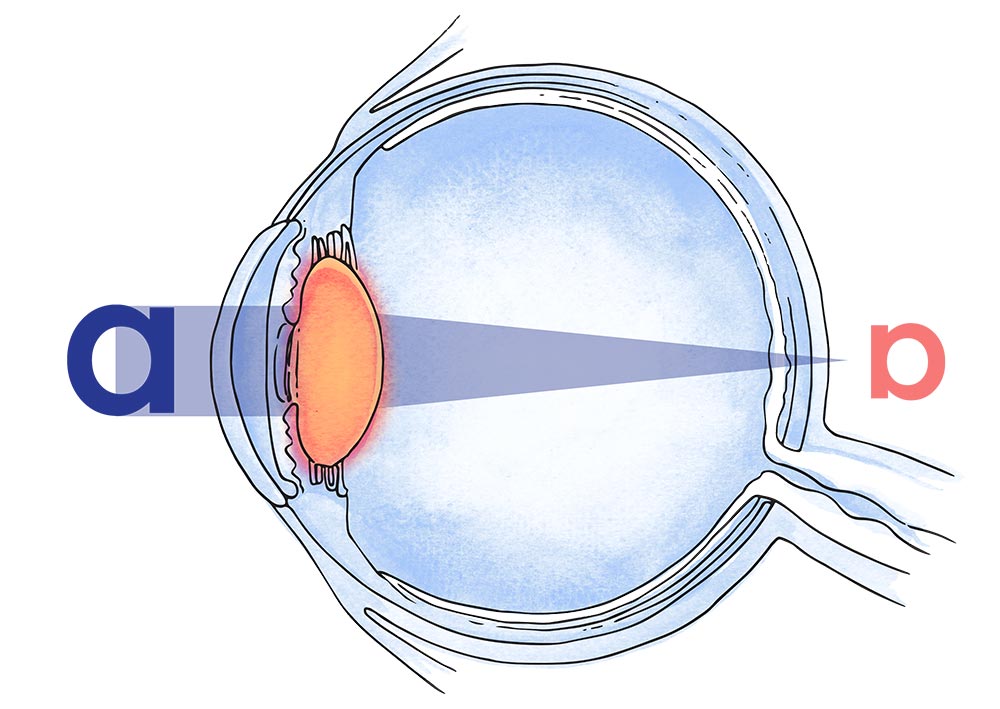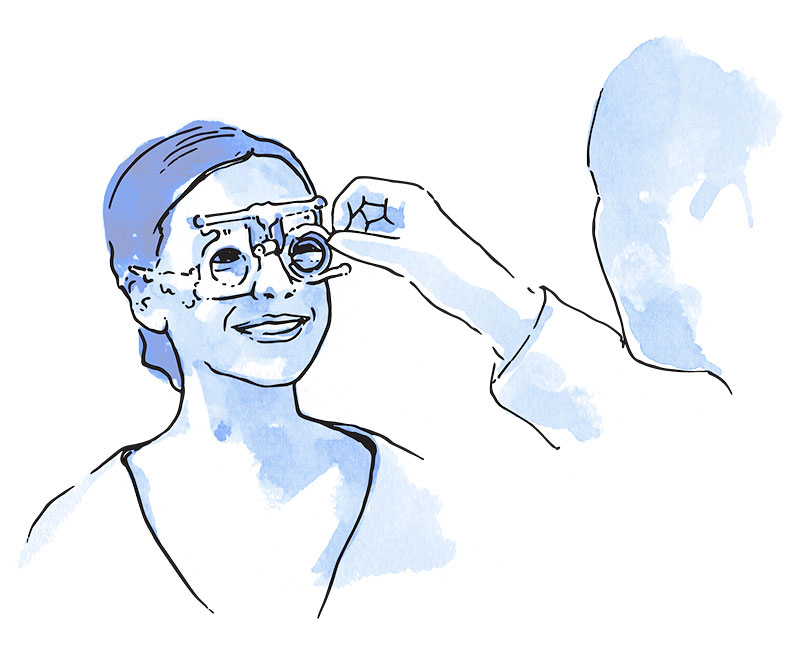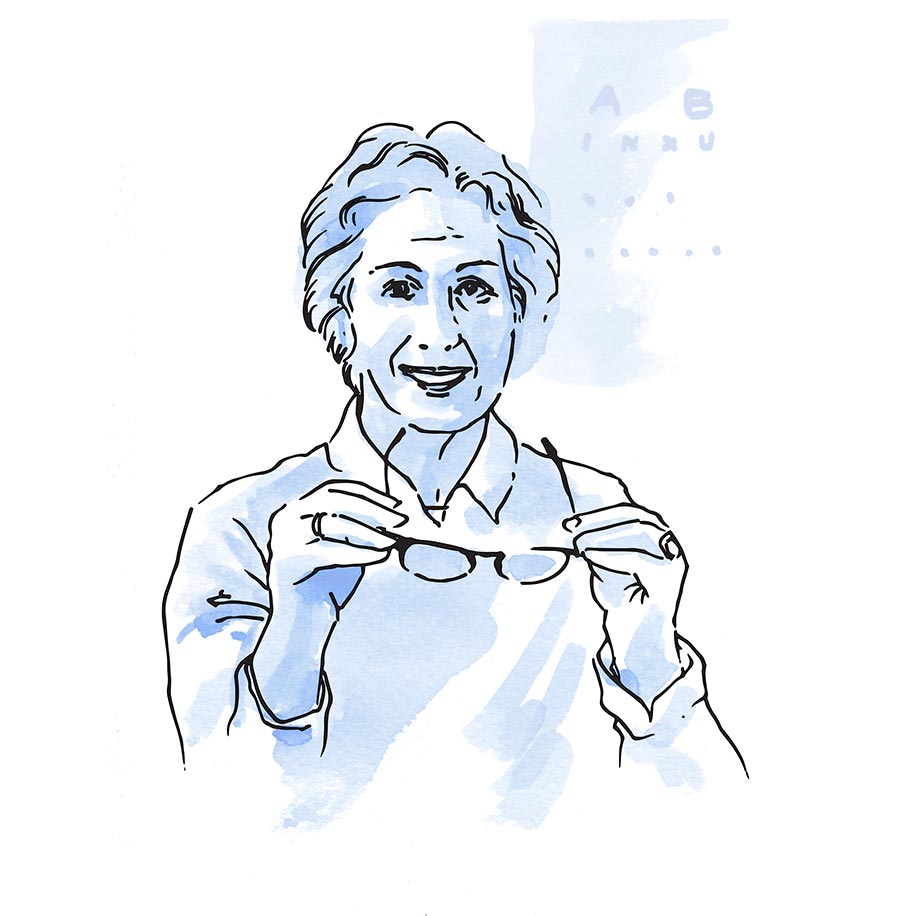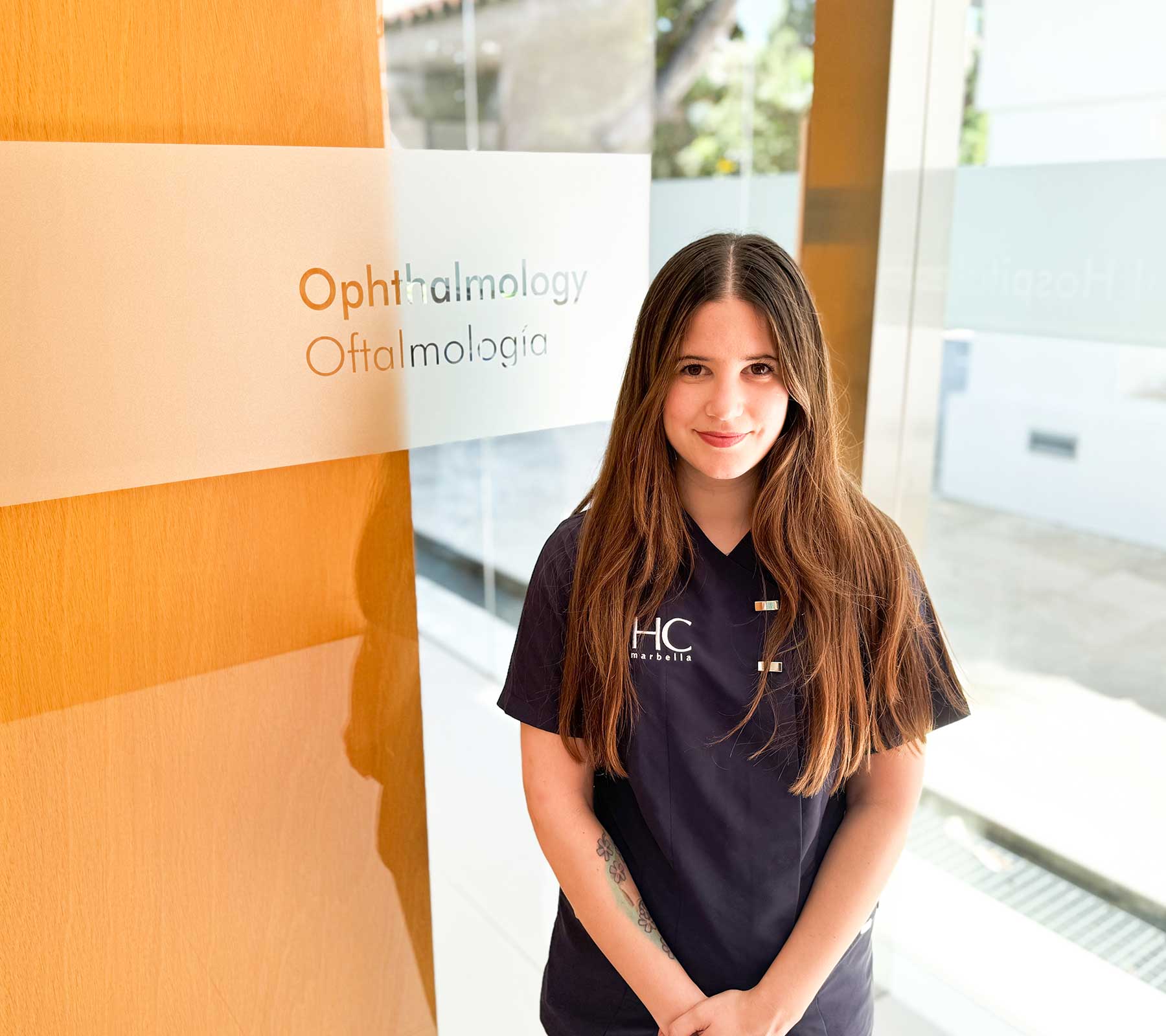Dr. Gismero Moreno, Saturnino
Jefe de servicio
Oftalmólogo especialista en Retina

Fast 100% der Bevölkerung ab 40-45 Jahren leidet unter Altersweitsichtigkeit. Bei Patienten mit Hyperopie (Weitsichtigkeit) kann sie schon eher auftreten.
Im Laufe des Lebens verliert die Linse an Elastizität und der Ziliarmuskel, welcher durch seine Kontraktion ermöglicht, dass die Linse sich abrundet, um ihre Brechkraft zu erhöhen und in der Nähe zu sehen, erleidet einen Funktionsverlust. Dieser Umstand führt dazu, dass eine Person die Fähigkeit zur Angleichung (Akkommodation) verliert – die Fähigkeit der Linse, Objekte bei verschiedenen Distanzen scharf zu fokussieren. Dies führt dazu, dass es schwieriger wird, in der Nähe scharf zu sehen.
Die Presbyopie nimmt mit abnehmender Elastizität der Linse zu. Somit kann es im Verlauf dazu kommen, dass die Sehfähigkeit auch für Objekte, die sich in mittlerer Distanz befinden, abnimmt. In der Regel stabilisiert sich die Sehfähigkeit ab dem 60. Lebensjahr wieder.


Der größte Risikofaktor der Presbyopie ist das Alter. Man kann nichts unternehmen, um ihr vorzubeugen, da es sich um einen normalen Alterungsprozess handelt. Wie bereits erwähnt, tritt sie bei Hyperopie schon früher auf. Dies ist im Wesentlichen auf optometrische Gründe zurückzuführen.

Es wird eine individuelle Beurteilung des Patienten zusammen mit einer ophtalmologischen Untersuchung vorgenommen, um die Situation einzuschätzen und die angemessene Behandlung festzulegen.

Lesebrillen sind die einfachste und angemessenste Lösung um die Sehschwäche zu auszugleichen, aber natürlich gibt es auch noch andere Optionen. Für diese ist es notwendig, eine sorgfältige Einschätzung des Patienten, unter Berücksichtigung seiner Bedürfnisse, Erwartungen und Lebensumstände vorzunehmen.
Wenn die Patienten aufgrund ihrer Charakteristiken geeignete Kandidaten sind, sind intraokulare Linsen eine valide chirurgische Lösung, die auch andere refraktive Defekte wie die Myopie, die Hyperopie oder den Astigmatismus lösen können. Zweifellos muss darauf hingewiesen werden, dass jeder Fall individuell betrachtet werden muss, um zu bestimmen, welche Herangehensweise die Optimale ist und ob die Behandlung empfehlenswert ist oder nicht. Zurzeit gibt es noch keine Linse, welche die Qualität der menschlichen Linse erreicht. Dennoch ist sichergestellt, dass wir über verschiedene Möglichkeiten von großer Qualität verfügen. Eine sorgfältige vorherige Bewertung bleibt jedoch weiterhin unerlässlich.
Der chirurgische Eingriff mit intraokularen Linsen ist dem Eingriff bei einem Katarakt ähnlich. Die defekte Linse wird entnommen um durch eine intraokulare Linse, welche ihre Funktion übernimmt, ersetzt. Es existieren verschiedene Arten intraokularer Linsen. Die für die Situation und die Erwartungen des Patienten geeignetste wird im Verlauf ausgewählt.

Dr. Gismero Moreno, Saturnino
Jefe de servicio
Oftalmólogo especialista en Retina
Dr. Alberte González, Antonio
Oftalmólogo
Especialista en Glaucoma
Dr. Flores Márquez, Ana
Oftalmóloga especialista en retina médica
Dr. Álvarez López, Alejandro
Cirugía oculoplástica y orbitaria
Partal, Carlos
Óptico y optometrista clínico
Tel.: +34 952 908 628
+34 609 148 799
952908898 Onkologie
951829978 Bildgebende Diagnostik
951829947 Gynäkologie
952908897 Fertilitäts-Zentrum
951829947 Physiotherapie